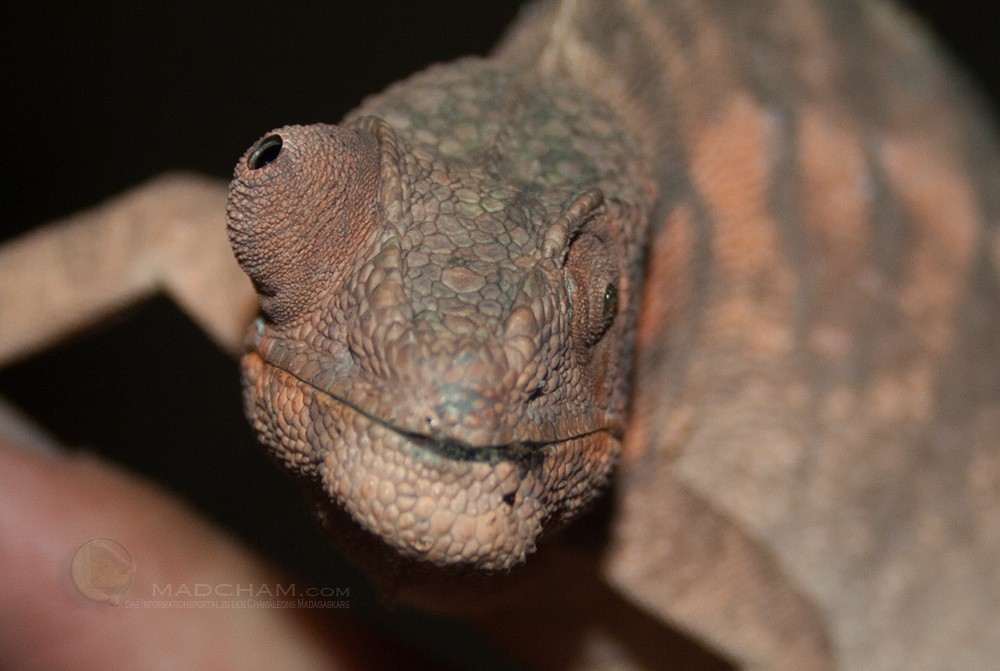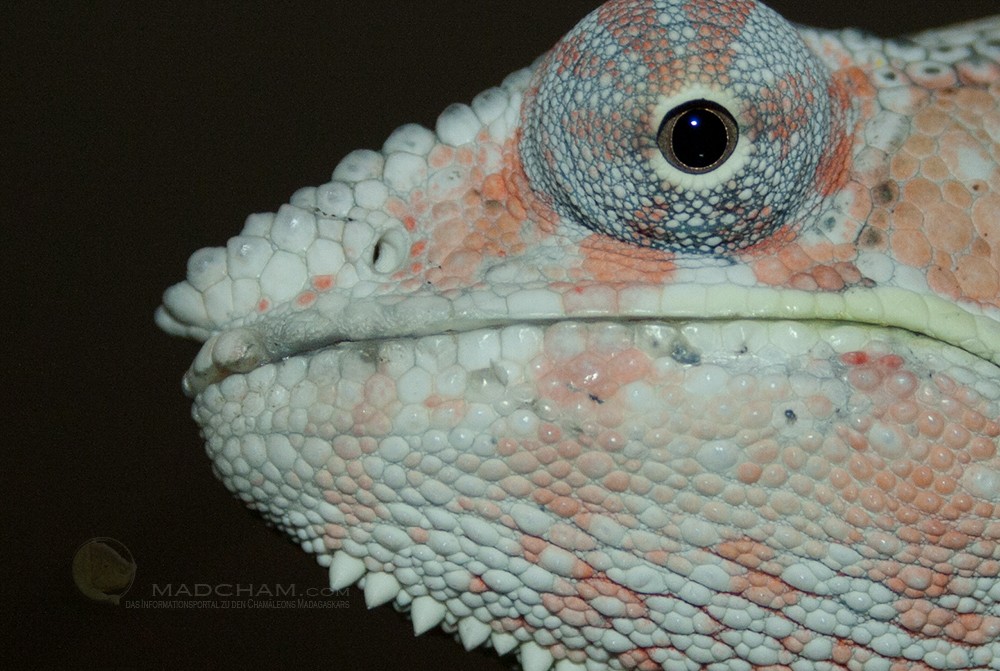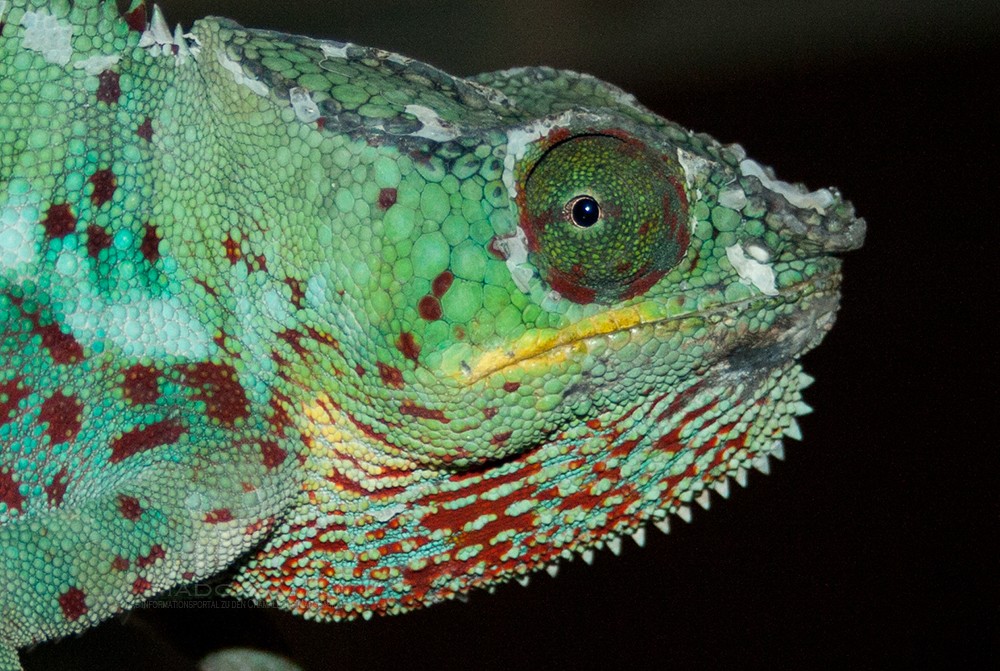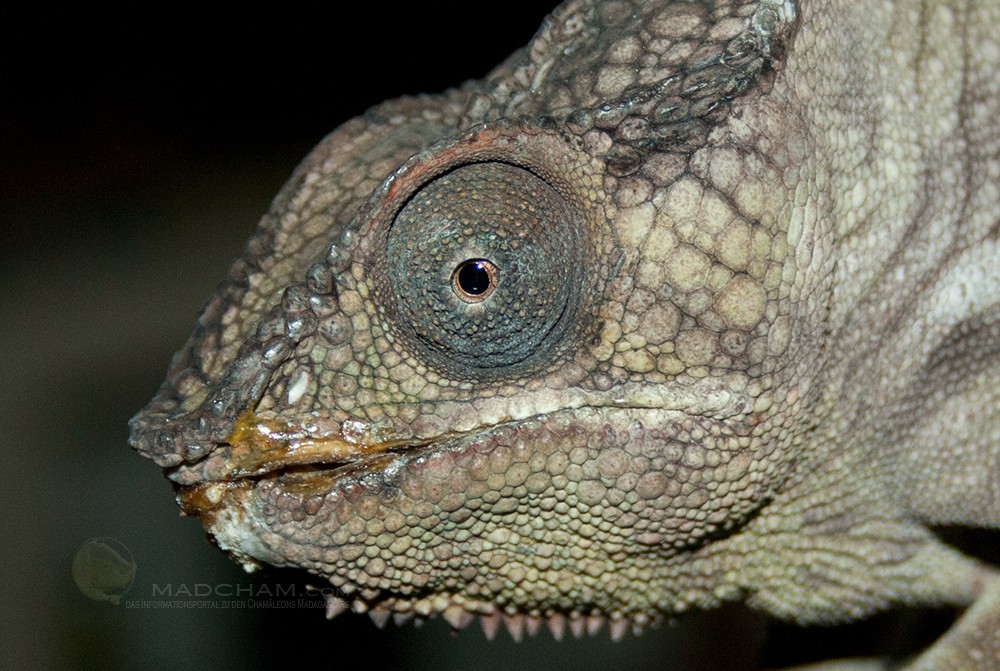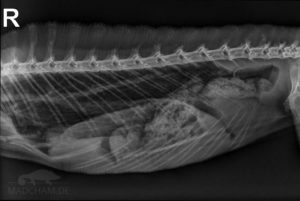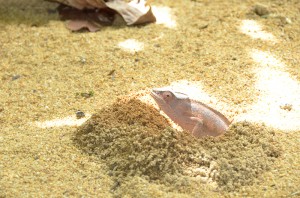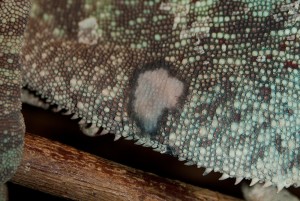Mouth rot – what is it?
„Mouth rot“ is a common term for the inflammation of mouth mucosa in chameleons. The medicinal term is stomatitis, in the case of the already affected bone and muscle inflammations it is called osteomyelitis.
Causes
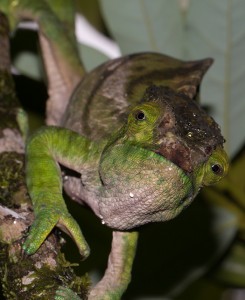
Severely progressed mouth rot, that has eaten up the nose appendage of a Calumma parsonii cristifer in Analamazaotra
In the beginning, there is usually a very small lesion somewhere on the mouth. It might be on the mouth mucosa itself but also on the scales, e.g. on the lips, on the nose or around the chin. Sadly, these first signs are often missed or not taken seriously. Reasons for these lesions may be bites of struggling feeders, an injury done by cage equipment, a mating partner, or an injury gotten while biting in a human hand or cage stuff. Actually, anything is worth considering that may injure the sensitive mouth mucosa or may hurt the scales outside the mouth. Even a fracture of lower jawbone symphysis after the chameleon fell down may come into question. Especially wild-caught chameleons that are immunocompromised due to long transports often have already infected lesions they got due to narrow transport boxes or other animals or while struggling when they got caught and handled for the first time in their life. In Madagascar, from time to time we find chameleons with severe mouth rot, especially in rainforest areas. These cases are mostly caused by attacks of predators (e.g. birds) or bites of other chameleons.
A chameleon’s mouth contains many different facultative pathogenic bacteria that infect a former small wound quickly. The body reacts with inflammation. In the best case, the body succeeds in eliminating the bacteria and close the clean wound again. Sadly, in chameleons, inflammations inside the mouth tend to spread, become purulent, and soon begins to attack the bone that is right under the mouth mucosa. The bone is literally “eaten up” by bacteria by and by. Poor husbandry, e.g. insufficient ventilation, bacterial breeding ground such as fogger or waterfalls, and high-stress levels due to keeping several chameleons together, insufficient planting, wrong lightning, or a lot of handling play an important role. These factors weaken the immunosystem of the chameleon on a long-term base and thus support the disease.
Some chameleon species tend to inflammations of the temporal gland in the mouth corners, which may also spread and look exactly like mouth rot.
Symptoms – What are the signs of mouth rot?
The first possible symptoms are small lesions, maybe just as some small, black scales when you have a closer look at the inside of the mouth. This is the point when to act and visit a vet to prevent bacterial infection and the development of mouth rot. Otherwise, it is often difficult to recognize a mouth rot early.
In advanced stages, the mouth mucosa is inflammation and you can see purulent, yellowish or blackish-dark, solid to crumbly masses on teeth and jawbones. If removed, these masses leave deep holes that may reach into the bone. Some animals salivate more, some show an asymmetric mouth with bumps due to these masses. In severe cases, the affected animal may lose bone or pus pieces sometimes while biting. Certain bacteria can be recognized by a typical odor. Few chameleons stop eating with mouth rot. Surprisingly, most chameleons eat even with massive mouth rot until they die. So unsuspicious shooting of feeders and normal eating is no sign that the chameleon is well.
Often, keepers recognize problems very late, when a purulent infection has lead to large bumps around the jaw bone of the chameleon.
Diagnosis and therapy
The most important part of therapy is to visit a reptile experienced vet as early as possible. Therapy of mouth rot can be protracted and difficult – usually because the diseases is realized late. Early seen small injuries are well treatable.
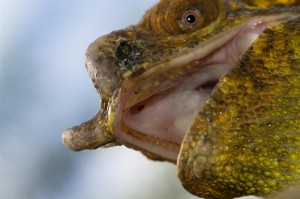
Purulent upper jaw and nose appendage in a yellow giant Calumma parsonii parsonii
The reptile vet will first thoroughly examine the mouth inside and outside. The wounds will be cleaned, disinfected, and supplied with medication. Usually, a swab is taken if the infected wound for bacterial examination (this way the vet tries to find out which bacteria is involved in this case of mouth rot). It is also important to get an antibiogram (resistance test) to find right and mainly working antibiotics as a therapy against the existing bacteria (in some cases, fungus is involved, too, and has to be treated with antifungals). Not all antibiotics work well against all bacteria. Some work well against certain bacteria, but not at all against others. The use of unsuitable antibiotics leads to further resistance in the bacteria, does not help the chameleon, and costs unnecessarily money – so we strongly discourage you from self-experiments and self-medication. As long as the result of the antibiogram is not yet available (it takes some days to grow bacteria), your vet will give you broadband antibiotics. Depending on the severity of the case, the animal should also get pain killers. Regular cleaning of the inflammation mouth area including medication is part of the therapy for the next days or weeks.
If necessary, the reptile vet will do x-rays to evaluate whether the inflammation affects bone structures or not. In some cases, surgery to remove parts of the teeth row or lower jaw may be necessary to save the chameleon. Provided that the inflammation has been fought completely and successfully, the animal can live well lacking a part of the jaw bone.
If even after months of therapy there is no improvement or even serious worsening of the chameleon’s condition, euthanasia is the only and last possibility to help the animal.
Left untreated and under unfavorable conditions, generally, every mouth lesion can lead to mouth rot.

